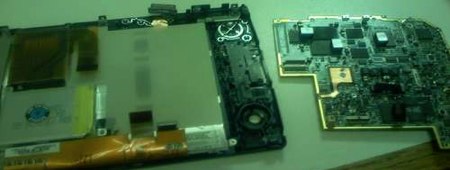
[blakebevin]’s sister shattered the screen on his Amazon Kindle, so he decided to try replacing it with the screen from a Sony Reader. He disassembled the Sony Reader and used a Dremel to mill down most of the aluminum tabs on the E Ink screen. The screen plugs into the same harness as the original Kindle screen the only problem is fit. The new screen interferes with some of the button movement and without trimming the case will bulge a little. Performance wise the screen ghosts on page turn and [blakebevin] assumes this is due to older technology. We’d hope to never have to do this, but it’s good to know the transplant option is there and not very difficult.
4 thoughts on “Kindle Screen Transplant”
Leave a Reply
Please be kind and respectful to help make the comments section excellent. (Comment Policy)















Way cool and very inventive.
Good news now is that Amazon is offering $100 off a Kindle if you sign up for a Chase Credit card. Brings the price down to $250 — A kindle with wirelesss access in perpetuity for $250. Now we;re talking!
I think he is a she …
http://www.instructables.com/member/blakebevin/
the ghosting is most likely do to the fact that each batch of e-ink has slightly different magnetic properties and needs a different switching algorithm to eliminate this ghosting effect
@ #3: I’m not sure about that, my Motorola F3 has an older e-ink display that ghosts like crazy, and it’s being used in the device it was designed for.
What I’d like to know is why the kindle’s screen shattered in the first place… I thought one of the benefits of e-ink was that it doesn’t require glass. I’ve never handled a kindle, but the screen on my phone is pretty much indestructible, and is only protected by a thin layer of plastic. Seems like an odd design choice.